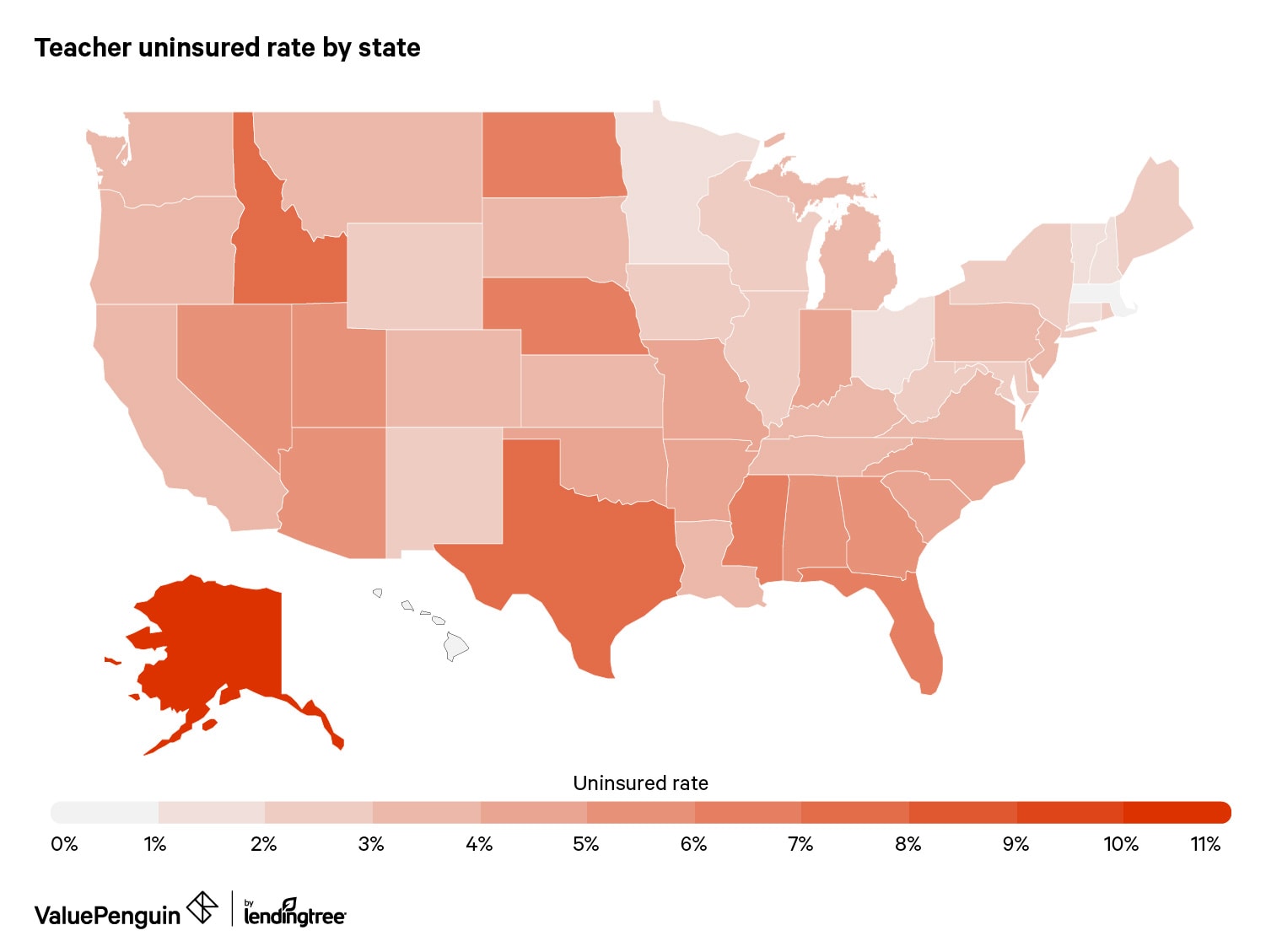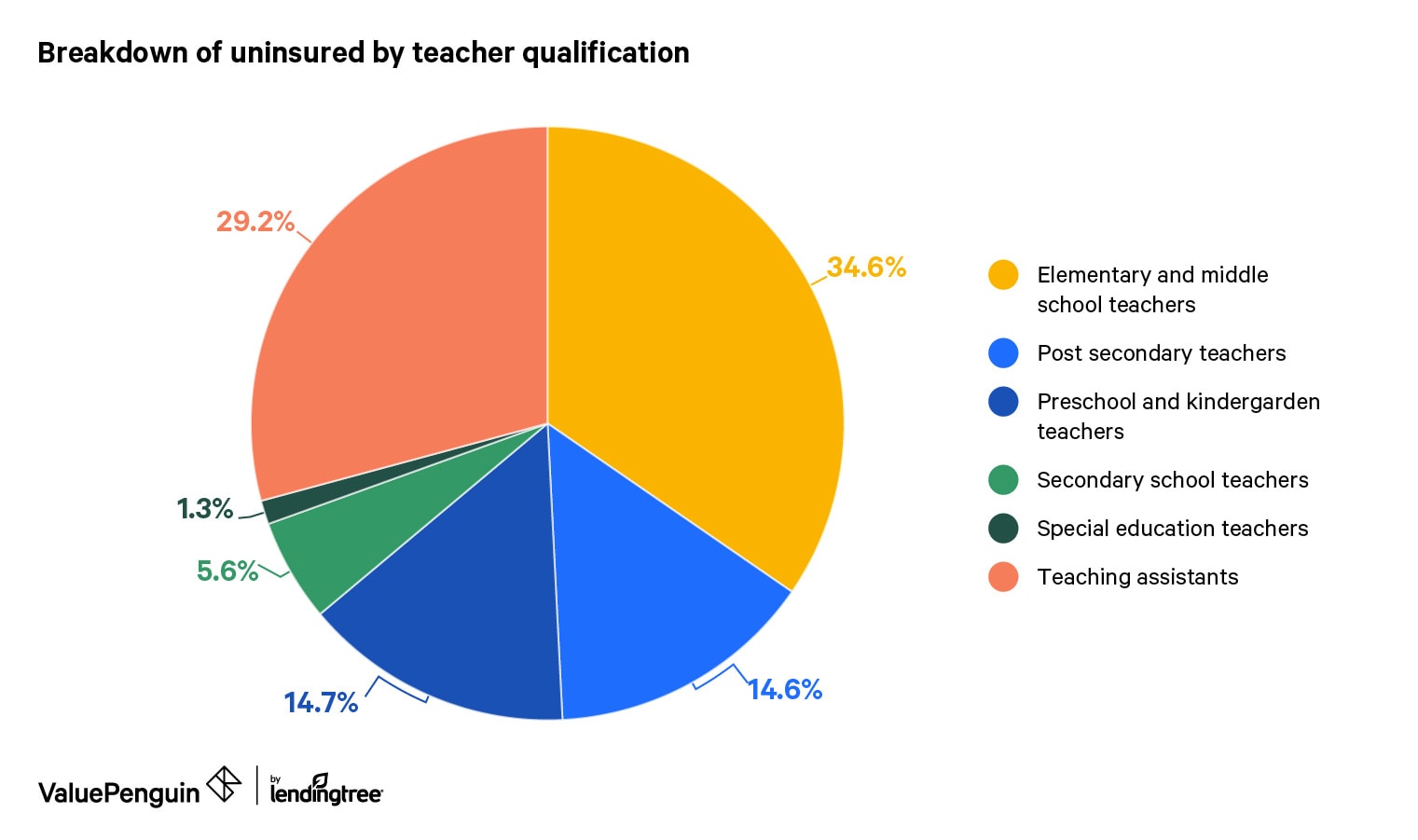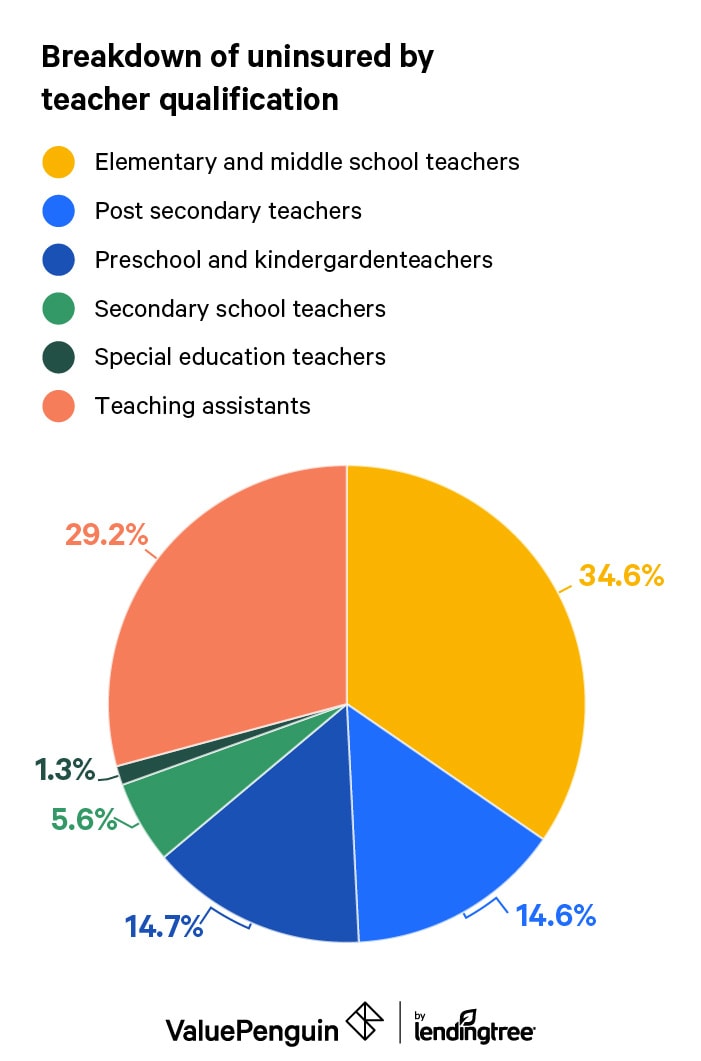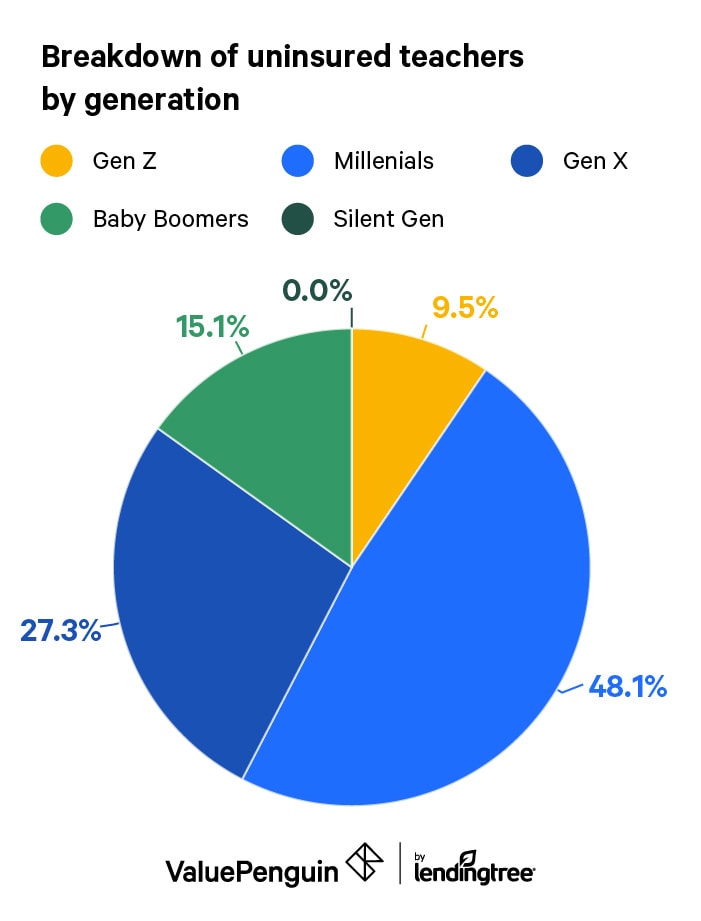Health Insurance
Nearly Half a Million Teachers Do Not Have Health Insurance, Leaving Some Financially Exposed to Potential COVID-19 Heath Care Costs

ValuePenguin analyzed the teacher population across the U.S. to understand where teachers are at risk, how many teachers are uninsured and how teachers will get to school.
Key Findings
- Nearly half a million teachers are uninsured, with teachers in the south being the most at risk.
- Lower grade level teachers and professors tend to be more uninsured when compared to other grades.
- From 2017 to 2018, the total number of uninsured elementary school teachers increased by more than 30%.
- Nearly 75,000 baby boomer teachers have no health insurance coverage.
Teacher uninsured rate by state


Nationally, 4% of the entire teacher population, about 500,000 people across all grades and specialties, has no health insurance. Alaska leads the nation with the highest uninsured rate among teachers at over 11%. Closely following are Texas (7%), Idaho (7%), Florida (7%) and Mississippi (6%).
Of the total uninsured teachers, elementary school and middle school teachers are the least insured individuals in the industry. They represent 34.6% of the uninsured population.


Teaching assistants represent the next-largest portion of the total uninsured teacher population at more than 29%. Public school teachers tend to have health insurance if they teach higher grades. Specifically, secondary school teachers only represented 6% of the uninsured teacher population. Special education teachers were the most insured group — nearly 99% had some type of health insurance coverage.
From 2017 to 2018, the total number of uninsured elementary school teachers increased by more than 30%.
The number of uninsured teaching assistants increased, too, by 11%. On the flip side, health insurance options continue to improve for special education aids. The number of uninsured people in this group dropped by more than 47%.
Nearly 75,000 baby boomer teachers have no health insurance coverage.


Of the uninsured population, 48% were millennials while 27% were Gen Xers. Interestingly, the largest year-over-year shift occurred in the baby boomer population. In 2017, baby boomer teachers represented more than a quarter of the total uninsured population. However, this number dropped to just 15% in 2018.
The number of uninsured teachers who between the ages of 39 and 54 years old doubled between 2017 and 2018, an increase of 66%.
Returning to school 101
If your school is planning in-person learning during this unique back-to-school season, there are ways to prepare. All teachers should review their health insurance policies to check what's covered and what they'll pay for doctor visits and COVID-19 tests. If you need to add coverage, ask your provider when you can make changes to the policy.
And if you need to use public transportation to get to school, the Centers for Disease Control and Prevention (CDC) suggests following local transit authorities for developing news and updated schedules. Furthermore, your transit authorities will usually provide guidelines on how to stay safe on public trains or buses. Know the social distancing guidelines, and always wear a face mask outside of the home.
Methodology
ValuePenguin utilized data from the American Community Survey (ACS) for the 2018 survey year to compile the information found here. Specifically, we analyzed information regarding occupation, age and health insurance coverage.